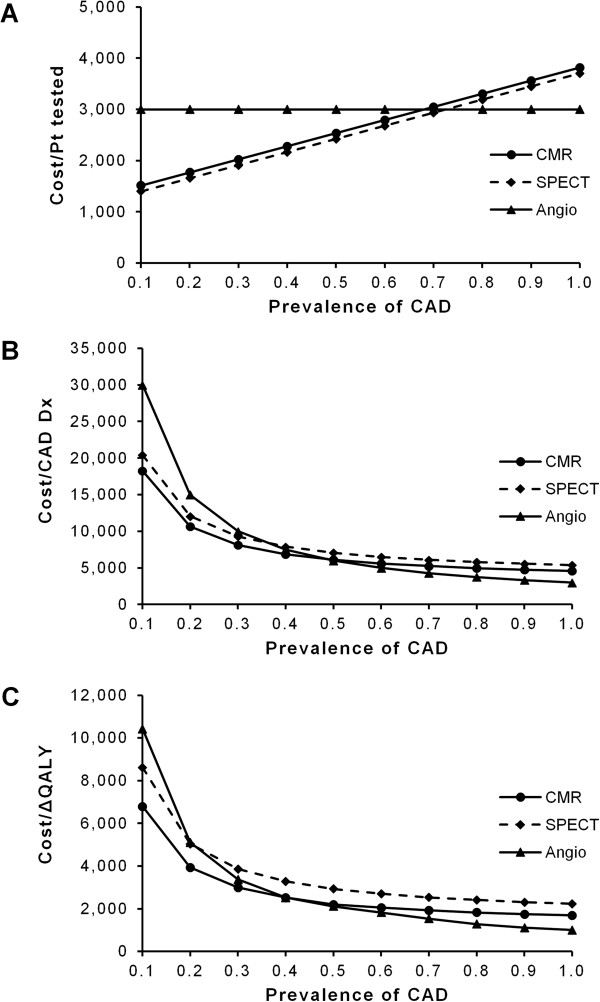Figure 2.
Effect of CAD prevalence on costs, cost-effectiveness and utility. In each of the three graphs, prevalence of coronary artery disease (CAD) increases along the horizontal axis. In all cases, costs are given in Euro. The upper graph (A) shows the total cost per patient (Pt) tested on the vertical axis for cardiovascular magnetic resonance (CMR), single-photon emission computed tomography (SPECT), and invasive coronary angiography (Angio). Costs increase significantly with CAD prevalence for CMR and SPECT, but not for invasive angiography. Cost per effect, in terms of cost per accurate diagnosis (Dx) of CAD, is depicted in the middle graph (B). The decrease of cost per effect with growing CAD prevalence indicates growing cost-effectiveness as cost per effect is the inverse of cost-effectiveness. The lower graph (C) plots cost per utility unit, in terms of quality-adjusted life-years gained (ΔQALY), on the vertical axis. Cost per utility unit decreases as prevalence of CAD increases.

